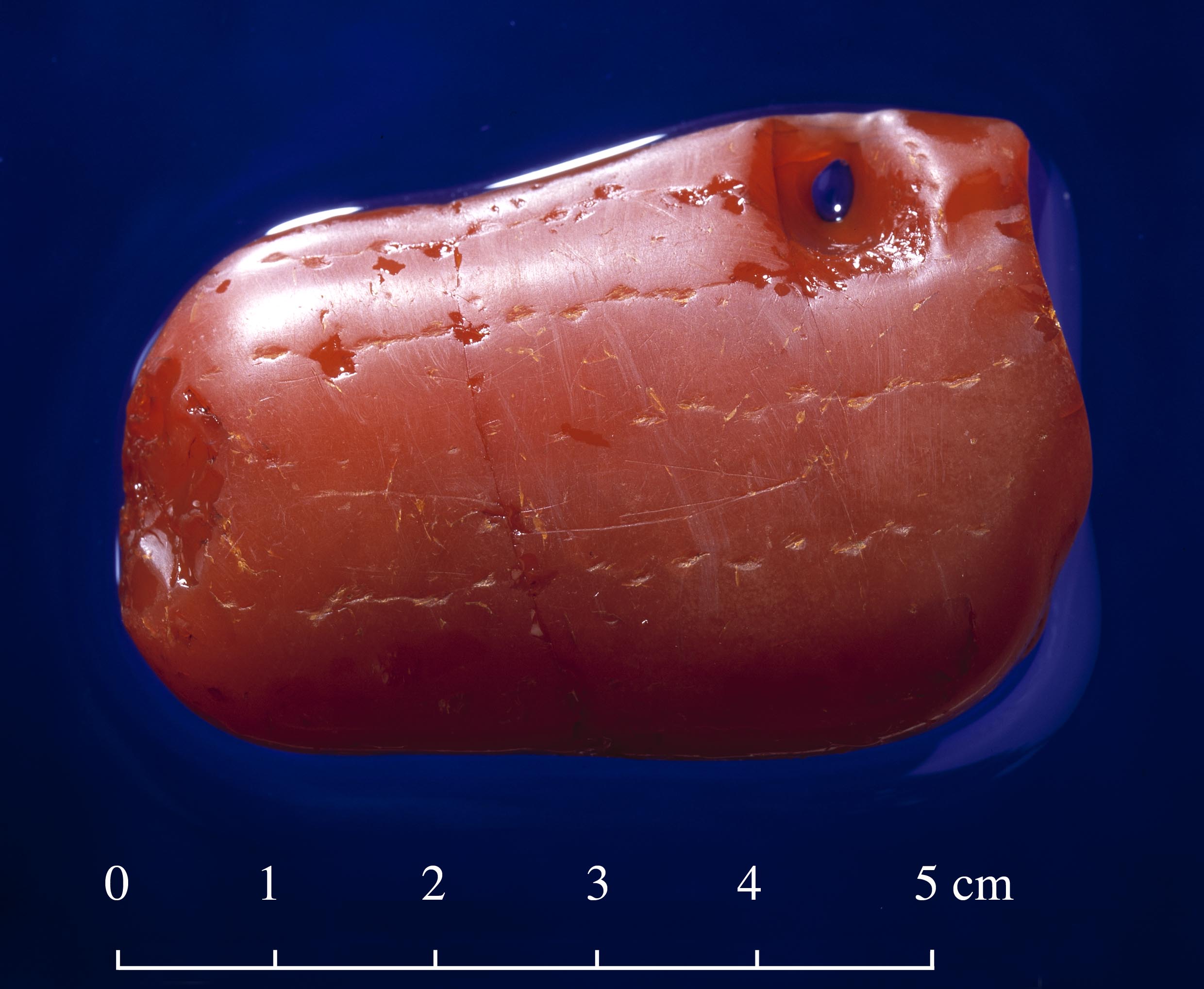

Eight of the pearls were found in a crack in the bedrock which was filled with fat soil, about four-five meters east of a row of dwellings. Between the crack and the dwellings there is a mound where another pearl was found. Another pearl was found in the wall between two dwellings. The dwellings are dated to the period between 5800±74 BP (before present) and 4885±45. The mound is dated to 4949±42 while material from the crack is dated to 4986±51.
We presume that the crack and the mound are representing graves. The acidic soil on Melkoya does not permit preservation of much organic material, such as skeletons or bones, and therefore we do not have any direct evidence fopr the presence of graves. On the other hand, one indication for these structures being graves the fact that they are situated inside the area of settlement. During the stone age burials in settlements were common, both inside houses and in the area where people worked and lived. This underlines how the ancestors were incorporated mentally and physically in the daily life.
Even though amber in archaeological context is most common in the Baltic, we also find amber far inside Russia. Towards south we have amber in stone age contexts from Poland and Germany. In Norway amber is rare, and only a few archaeological findings of amber are dated to the stone age. From Northern Norway only one other find can be compared to the ones we have done at Melkoya. This is a pearl found at Mageroy in Finnmark in 1992. Also here the pearl was found in the wall of a dwelling built in the beginning of the Late Stone Age. Contrary to the pearls from Melkoya, this one was not in such a good condition.
The finds from Finnmark are unique, both when the distance to natural occurences is taken into consideration, but also because these finds most probably are amongst the oldest known from Norway and Northern Scandinavia.
The largest amber pearl from Melkoya, with decorations in parallell rows